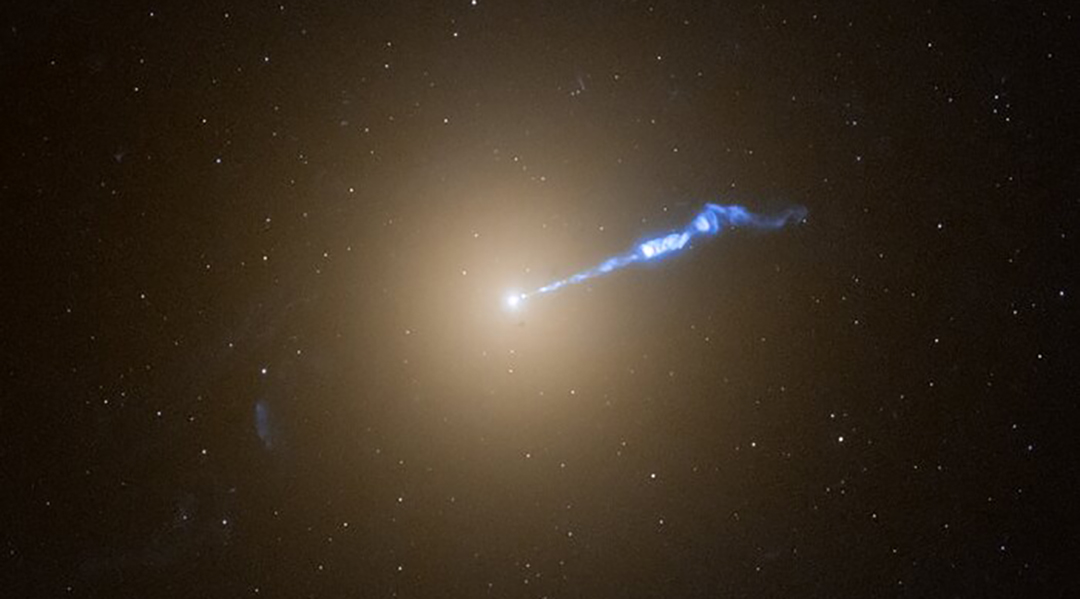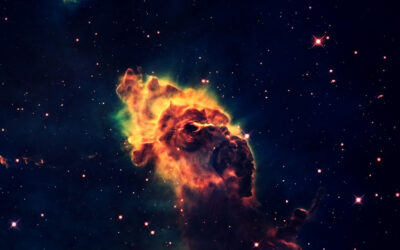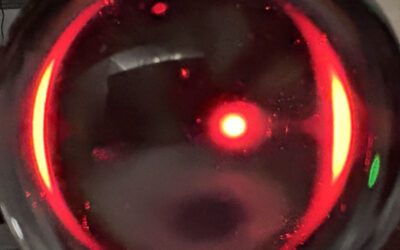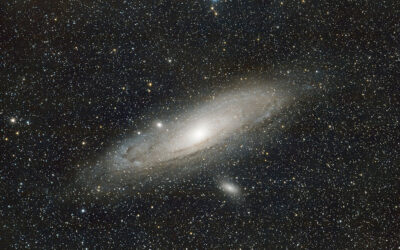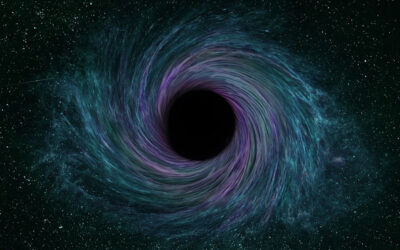In 2019, astronomers delivered the first images of the supermassive black hole at the heart of the distant galaxy, Messier 87 (M87) using the Event Horizon Telescope (EHT). This black hole, designated M87*, was the first black hole imaged by humanity, and almost eight years later, is still delivering surprises.
Made using observations from the Hubble Space Telescope, the recent discovery that a jet of matter blasting from M87* is lighting up dead stars called white dwarfs along its path, causing them to erupt in “nova” explosions, definitely qualifies as just such a surprise.
The revelation of this “cosmic blowtorch” is detailed in a paper published in The Astrophysical Journal. The nova-lighting action of the jet is even more exceptional because the astronomers who discovered it can’t yet explain it.
“We don’t know what’s going on, but it’s just a very exciting finding,” said research lead author Alec Lessing of Stanford University in a statement from the European Space Agency (ESA). “This means there’s something missing from our understanding of how black hole jets interact with their surroundings.”
Hubble observed M87* for nine months to count 94 novas erupting in the vicinity of the black hole’s jets. The observations also accounted for the deepest-ever images of the massive galaxy M87, which is located 53.5 million light-years away from Earth. The long-serving space telescope was the ideal instrument for observing these jets and the novas they triggered because it has the sensitivity to distinguish them from the bright glow of the material surrounding M87*.
“The jet was not the only thing that we were looking at — we were looking at the entire inner galaxy. Once you plotted all known novae on top of M87, you didn’t need statistics to convince yourself that there is an excess of novae along the jet,” explained team member Michael Shara of the American Museum of Natural History in New York City. “This is not rocket science. We made the discovery simply by looking at the images. And while we were really surprised, our statistical analyses of the data confirmed what we clearly saw.”
Stay well clear of black hole jets!
M87* is a very different beast than the supermassive black hole at the heart of the Milky Way, known as Sagittarius A* (Sgr A*). They are as different as black holes can be, considering these cosmic titans are defined by very few characteristics, or as physicist John Wheeler famously said, “black holes have no hair.”
Both are supermassive black holes, but M87* is considerably more monstrous than Sgr A*. While the black hole at the heart of our galaxy has a mass equivalent to 4.3 million suns, M87* has a mass equal to 6.5 billion suns. In addition to this, while Sgr A* is a light eater on a diet that equates to a human eating one grain of rice every million years, M87* is greedily consuming matter.
M87* does not consume all the material that surrounds it in a flattened cloud of superheated ionized gas or “plasma” called an accretion disk. The supermassive black hole’s powerful magnetic fields channel some of this material to the poles M87*, where it is accelerated to speeds approaching the speed of light and blasted out as powerful plasma jets. The jets of M87* stretch for 3,000 light-years, rocketing through the massive galaxy at near-light speeds.
As you might imagine, anything caught in the path of these twin jets, one from each pole of the black hole, is fried by this high-energy plasma. But these new Hubble observations demonstrate that being in the near proximity of these jets is just as risky. That’s because the stellar bodies enflamed by these jets aren’t directly in their path.
White dwarfs as cosmic cherry bombs
The particular novas observed occurring close to the trajectory of the jets of M87* aren’t star-destroying supernovas but are a type of stellar explosion that occurs when an already dead star called a white dwarf accumulates matter from a companion star.
This matter builds on the surface of the white dwarf, and when the dead star has gathered enough matter from its companion or “donor” star, this material reaches critical mass and explodes in a runaway nuclear explosion. This doesn’t destroy the white dwarf but causes it to eject its outer layer. This leaves the dead star ready to accumulate more matter and generate another nova explosion once critical mass is reached again.
The team behind this research found twice as many nova-blasting white dwarfs and companion stars aligned with the path of M87*’s jets as seen in similar systems.
“There’s something that the jet is doing to the star systems that wander into the surrounding neighborhood. Maybe the jet somehow snowplows hydrogen fuel onto the white dwarfs, causing them to erupt more frequently,” Lessing explained. “But it’s not clear that it’s a physical pushing. It could be the effect of the pressure of the light emanating from the jet. When you deliver hydrogen faster, you get eruptions faster. Something might be doubling the mass transfer rate onto the white dwarfs near the jet.”
Another hypothesis put forward by the team is that the jet from M87* is heating the donor stars in these white dwarf systems, causing them to expand faster and overfill what is known as its “Roche lobe,” thus increasing the speed of the mass transfer. The problem with this idea is that the researchers don’t think the jets of M87* could heat the donor stars enough to double the number of observed novas along its path.
“We’re not the first people who’ve said that it looks like there’s more activity going on around the M87 jet,” Shara concluded. “But Hubble has shown this enhanced activity with far more examples and statistical significance than we ever had before.”
Reference: A. M. Lessing., M. M. Shara., R. Hounsell., ey al., A 9 Month Hubble Space Telescope Near-UV Survey of M87. II. A Strongly Enhanced Nova Rate near the Jet of M87, The Astrophysical Journal, (2024), DOI: 10.3847/1538–4357/ad70b7
Feature image credit: ESA/Hubble

